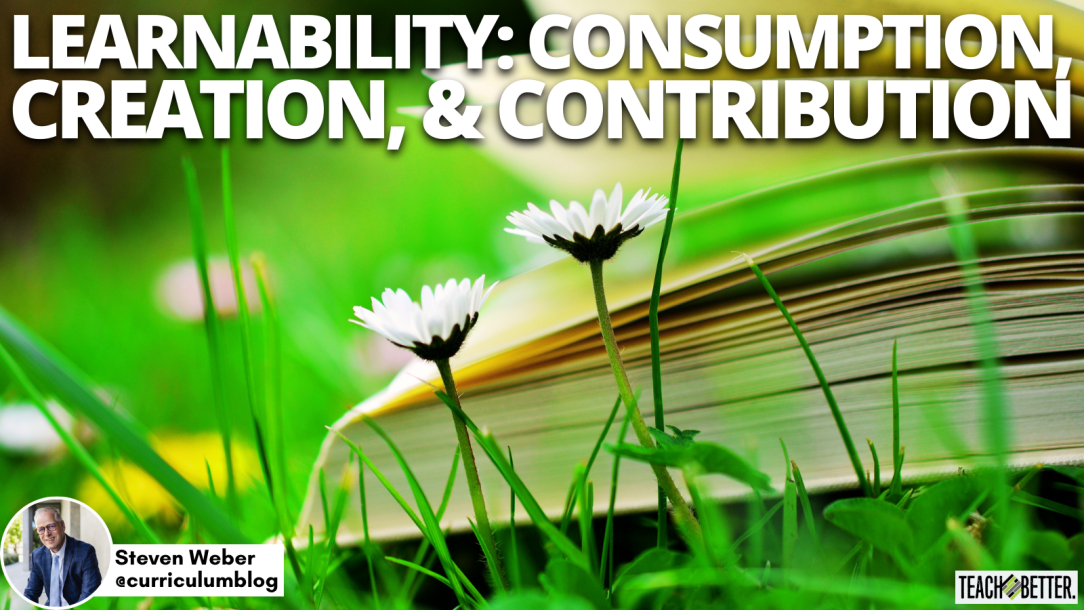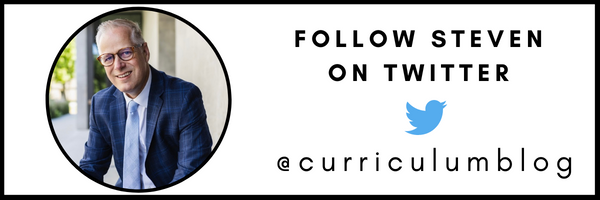TL;DR:
- Learnability may be at the top of the list of skills high school graduates need.
- Consider what every student should know and be able to do when developing curriculum and standards. Be careful not to just cover the unit plan or standards without considering the student evidence that demonstrates learning.
- It is important that students are provided opportunities to consume, create, and contribute in order to be better prepared for post-secondary school or training beyond graduation.
- Consider 7 questions for teacher teams on learnability.
While there are many skills high school graduates need, learnability may be at the top of the list. Learnability “confers a future value on you by making you agile. It’s a currency” (Edvantic, 2021). Success in school can be determined by completed assignments, letter grades, and ACT/SAT scores. There is a game of school and it is different from the game of life. “Educators might need to push against the obstacle of having students’ learning driven by extrinsic rewards like test scores, grades, or even praise so that their learning becomes more driven by the intrinsic meaning and purpose invested in it” (Hargreaves, 2021).
The Devil Is in the Details
A guiding question for teacher teams is, What should every student know and be able to do? Teacher teams, district curriculum, and state and national standards determine the key skills and concepts that will be covered in a grade level or course. In an effort to cover the curriculum or standards, teachers may inadvertently commit the twin sins of curriculum design. Wiggins and McTighe (2005) introduced the Twin Sins of Curriculum Design: Activity-Oriented and Coverage-Oriented curriculum planning. In other words, teacher teams can be crystal clear about what every student should know and be able to do, but the devil is in the details. Simply covering the unit plan or standards may be interfering with learnability. Teachers must ask, “What evidence will students produce in order to demonstrate understanding?”
As teachers prepare students for success in life, it is important to ask whether our assignments and assessments are providing students with opportunities to create and contribute. Click To Tweet
Graduation Is No Longer a Finish Line
In classrooms across the United States, students may be asked to consume, create, and contribute. An introductory lesson may involve more consumption, such as learning key vocabulary, note-taking, and consuming new knowledge. If a student never has a chance to create or contribute, then it is unlikely that the student will be able to transfer the knowledge in the next class or in different situations. “No longer an endpoint in the public education system, the American high school is now being asked to prepare all its students for the post-secondary schooling and training required for full economic and social participation in U.S. society” (Balfanz, 2009, p. 18). What does this mean for curriculum designers?
The Difference Between Consumption, Creation, and Contribution
Consumption: Student consumption is part of learning new information. When students are introduced to new skills, concepts, or procedures, they must consume knowledge before they are able to complete an assignment or demonstrate understanding.
Creation: Student creation can take two different forms. When you visit a classroom with 25 students and you view 25 nearly identical assignments, then the students have created. When students are asked to memorize and recall information or compliance is the goal, then you may see a cookie-cut template that each student follows in order to achieve success. A second form of creation involves student choice. When students are able to answer the essential question or demonstrate their understanding in their own way, this is a form of creation. The second form allows students to own their learning more than the first example.
Contribution: When students move from passive learning to contributing, they are empowered to own their learning. ‘Learner Agency’ is when the students set goals, reflect on their progress, and power shifts from teacher to learner.
Profile of a Graduate
Teachers and administrators in schools around the world have asked, “What should a high school graduate know and be able to do?” A Profile of a Graduate is co-created by school staff as they reflect on the desired outcomes of a K-12 school system. Thorndike (1906) declared “no high school is successful which does not have in mind definitely the work in life its students will have to perform, and try to fit them for it” (p. 180). Does your school staff have a clear set of learning targets for K-12 students? Students must develop an academic foundation, but they also need “another set of cognitive skills that might matter more: the ability to rethink and unlearn” (Grant, 2021). This skill is also known as learnability.
[scroll down to keep reading]So What…Now What?
As teachers prepare students for success in life, it is important to ask whether our assignments and assessments are providing students with opportunities to create and contribute. What is our current ratio of consumption versus student contribution? Our students must be able to create and contribute in order to navigate the game of life.
Questions For Teacher Teams
- What is the Profile of a Graduate for our school district?
- What are the skills and dispositions that students should develop as a result of this unit?
- Are we teaching students how to copy and paste or are we providing students with the life skills of rethinking and unlearning?
- Do students know how to ask questions and challenge ideas?
- What does student contribution look like in our class?
- Are students given the opportunity to create? Where is the evidence of student creation in our classroom, digital portfolios, and in our community?
- Are we teaching students the skill of learnability?
References
Balfanz, R. (2009). Putting middle grades students on the graduation path: A policy and practice brief. National Middle School Association. Ohio.
Edvantic. (2021). Learnability: The most important skill of the future. Retrieved from https://www.edvantic.com/blog/learnability-the-most-important-skill-of-the-future
Grant, A. (2021). Think again: the power of knowing what you don’t know. Viking, an imprint of Penguin Random House LLC. New York.
Hargreaves, A. (2021). The future of learning lies in engagement. ASCD. Retrieved from https://www.ascd.org/el/articles/the-future-of-learning-lies-in-engagement
Thorndike, E. (1906). The opportunity of the high schools. The Bookman.
Wiggins, G. & McTighe, J. (2005). Understanding by design (2nd Ed.), ASCD. Alexandria, VA.
About Steven Weber
Dr. Steven Weber is a curriculum leader. He has served on multiple state and national boards. His areas of research include curriculum design, multiplying leaders, professional learning, and school leadership.




